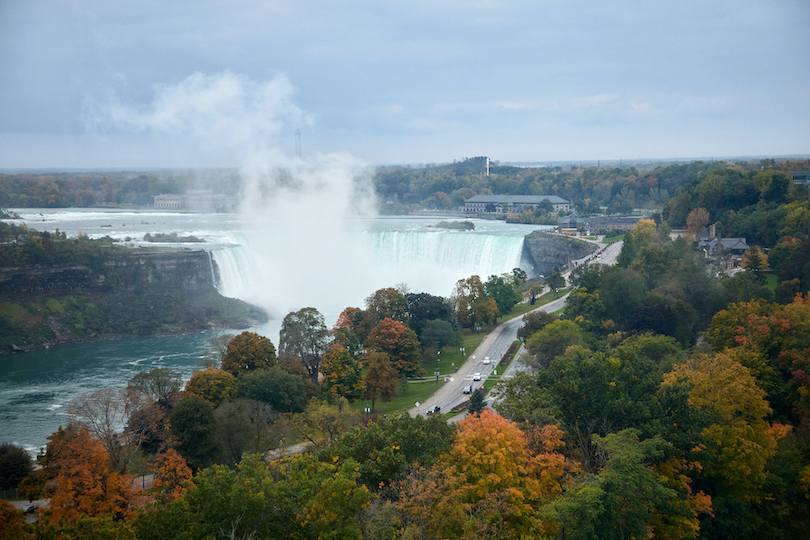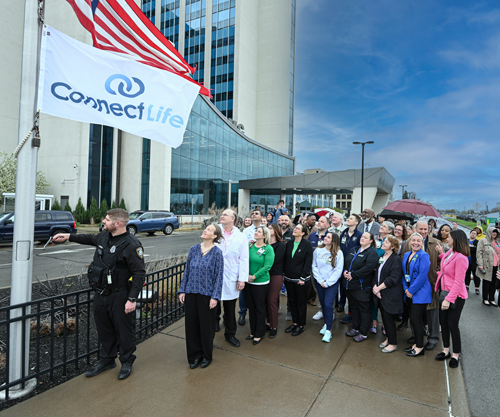Featured News - Current News - Archived News - News Categories
Among largest capital projects in New York's history; directly supports 200,000 jobs and $17 billion in capital investments at state's largest power plant
Gov. Andrew M. Cuomo on Wednesday announced the New York Power Authority is launching a 15-year modernization and digitization program to significantly extend the operating life of the Niagara Power Project, the largest source of clean electricity in New York and one of the country's largest hydroelectric projects.
The life extension and modernization program, called "Next Generation Niagara," centers on the Robert Moses Niagara Power Plant, the Niagara project's main generating facility. NYPA plans to invest $1.1 billion in the project, making it one of the most ambitious recent infrastructure endeavors in the state.
A press release stated, “ ‘Next Generation Niagara’ will help realize Cuomo's aggressive clean energy goals for transitioning the state to 100% carbon-free electricity by 2040, and serve as a grounding force for the forward-looking provisions in the landmark Climate Leadership and Community Protection Act, which Cuomo recently signed into law.”
"The Niagara Power Project is New York's largest source of clean electricity, and this modernization project will allow it to continue operating for another 50 years," Cuomo said. "This extraordinary investment is a crucial part of our nation-leading plan to decarbonize New York's electric power system by 2040, and will continue supplying job-producing companies across the state with clean, low-cost energy."
"This significant investment, one of the largest capital projects in state history, will continue operations of the historic Niagara Power Project," Lt. Gov. Kathy Hochul added. "This project will support hundreds of thousands of jobs, and advance our aggressive clean energy goals. The modernization of our state's largest power plant continues our efforts to combat climate change and ensure a cleaner and greener environment now and for the future."
The improvements will include replacing aging equipment with the latest machinery reflecting advanced digital technologies for optimizing the hydroelectric project's performance. The project will secure the plant's long-term future as a clean power generator that spurs economic development in Western New York and across the state through its low-cost power allocation programs, including Cuomo's ReChargeNY program. The Niagara Project, through these programs, directly supports more than 200,000 jobs and $17 billion in capital investments.
“Next Generation Niagara” also will support an estimated 60 union construction jobs over the course of the project.
NYPA's board of trustees approved the major capital investment in the Niagara project, which began operating in 1961, at its meeting earlier this week. The $1.1 billion investment makes “Next Generation Niagara” the largest capital project in NYPA's history.
The press release noted, “The initiative will encompass four major phases that will ensure continued safe, reliable operation for decades to come, and will modernize NYPA's flagship plant as the Power Authority advances its goal to become the nation's first end-to-end digital utility. The four phases include a comprehensive inspection of the Robert Moses plant's penstocks; refurbishing the 630-ton crane that enables mechanical work at the plant; upgrading and digitizing the control systems; and building a new back-up control room and replacing mechanical parts that have reached the end of their operating life.”
Work is set to begin later this year.
NYPA Chairman John R. Koelmel said, "As the name ‘Next Generation Niagara’ suggests, NYPA is looking to ensure that the Niagara Power Project's clean low-cost power continues to power New York's clean energy economy well into the future. This project is a natural extension of the careful stewardship NYPA provides to all of our generation and transmission assets statewide and our commitment to supporting Gov. Cuomo's vision of a carbon-free future for New York state."
NYPA President and CEO Gil C. Quiniones said, " ‘Next Generation Niagara’ is the largest and most comprehensive modernization and digitization project ever undertaken by NYPA. The Robert Moses Niagara Power Plant is a major piece of New York's existing renewable electricity capacity, and we are committed to playing a leadership role by sustaining and growing the amount of carbon-free electricity we provide to our great state."
Senate Energy Committee Chairman Sen. Kevin S. Parker said, "Gov. Cuomo's plan to extend the operating life of the Niagara Power Project will increase our clean energy sources and create additional green-collar job opportunities for New Yorkers. I applaud Gov. Cuomo's commitment to combating climate change and ensuring a clean energy future for New York state."
New York State Sen. Robert Ortt said, "This Niagara Power Project is the largest source of renewable and clean energy in the entire state and is a resource we should continue to maximize. If we are to make the most of this unique natural resource located in our region, we must invest in the Niagara Power Project's facilities and upgrade its equipment so that we may continue to capitalize on the clean and reliable power produced by the falls. This proposed investment of $1.1 billion will see the life of the Niagara Power Project extended for decades to come and, with it, major benefits across our region."
Assemblyman Angelo Morinello said, "Thank you Gov. Cuomo and NYPA for your vision to invest in the Niagara Power Project so it can continue to serve as a leader in clean renewable energy and a model for the world. The Niagara Power Project will produce clean energy without leaving any carbon footprint using the natural resource God has given us."
NYPA also owns and operates approximately one-third of New York's high-voltage power lines. These lines transmit power from NYPA's three large hydroelectric generation facilities, including its flagship Niagara plant, and from wind power generation facilities, connecting nearly 7,000 megawatts of renewable energy to New York's power grid. This includes more than 6,200 megawatts of hydropower and approximately 700 megawatts, or more than a third, of state-generated wind energy to the grid.
History
Following the collapse of Niagara Mohawk's Schoellkopf Power Station in 1956, and the elimination of tens of thousands of jobs in the Niagara Region – and nearly 25% of the city's tax base – the Federal Power Commission issued a license in 1957 to the New York Power Authority to redevelop Niagara Falls' hydroelectric power.
The Power Authority employed 11,700 workers and, within three years, 12 million cubic yards of rock were excavated. The herculean effort led to the construction of a massive main structure that is 1,840 feet long, 580 feet wide and 384 feet high.
When the Niagara Power Project produced its first power in 1961, it was the largest hydropower facility in the Western world. President John F. Kennedy called it "an example to the world of North American efficiency and determination."
After 60 years of operation and its obtaining a new 50-year federal operating license in 2007, the Niagara Power Project remains a crown jewel of New York's power infrastructure.
NYPA is the largest state public power organization in the nation, operating 16 generating facilities and more than 1,400 circuit-miles of transmission lines. More than 70% of the electricity NYPA produces is clean renewable hydropower. NYPA uses no tax money or state credit. It finances its operations through the sale of bonds and revenues earned in large part through sales of electricity. For more information, visit http://www.nypa.gov.
Cuomo's “Green New Deal” is a climate change program set to put the state on a path to being entirely carbon-neutral across all sectors of the economy, including power generation, transportation, buildings, industry and agriculture. The governor's program also establishes a goal to achieve a zero-carbon emissions electricity sector by 2040, faster than any state in the nation.
The recently passed Climate Leadership and Community Protection Act mandates several of the governor's “Green New Deal” clean energy targets, including installing nine gigawatts of offshore wind by 2035; six gigawatts of distributed solar by 2025; and three gigawatts of energy storage by 2030.
The CLCPA also calls for an orderly and just transition to clean energy, creating jobs while spurring a green economy. It builds on New York's ramp-up of clean energy, including a $2.9 billion investment in 46 large-scale renewable projects across the state, the creation of more than 150,000 jobs in New York's clean energy sector and 1,700% growth in the distributed solar sector since 2012. The CLCPA directs state agencies and authorities to work collaboratively with stakeholders to develop a plan to reduce greenhouse gas emissions 85% from 1990 levels by 2050, and to work toward a goal of investing 40% of clean energy and energy efficiency resources to benefit disadvantaged communities.





























